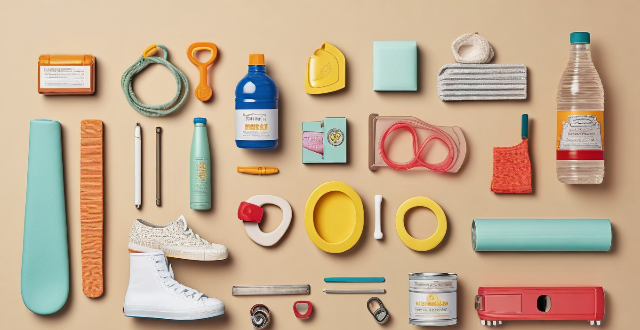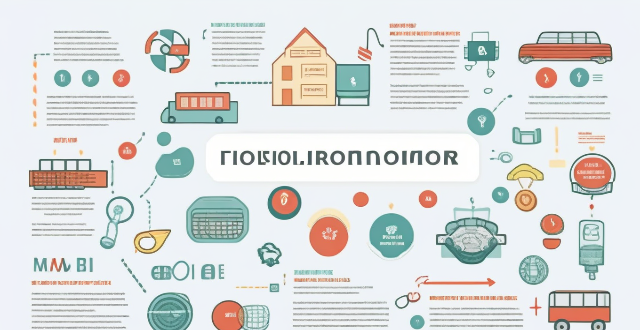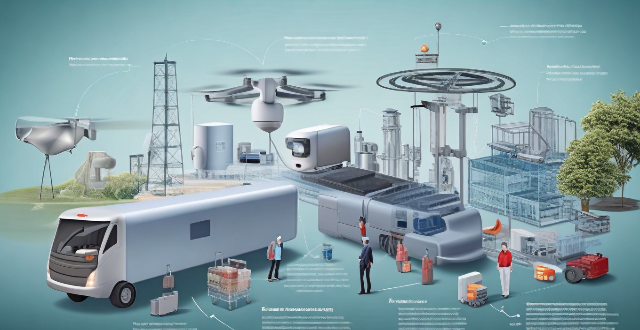Emergency Items

What kind of first aid supplies should I have in my home emergency kit ?
This article provides a comprehensive list of essential items to include in a home emergency first aid kit. It covers various categories such as adhesive bandages, gauze and roller bandages, medical tape and safety pins, antiseptics and disinfectants, pain relievers and fever reducers, tools and miscellaneous items, and personal items. The article emphasizes the importance of regularly checking expiration dates and replacing supplies as needed. It also suggests ensuring that all family members are aware of the kit's location and how to use its contents properly.

Are there any special considerations for creating an emergency kit for children ?
Special considerations for creating an emergency kit for children include age-appropriate items, comfort items, snacks and water, clothing and footwear, and entertainment. It is important to tailor the contents of the kit to the child's needs and abilities, and include items that can help to calm and reassure the child during an emergency situation.

What is the best way to store an emergency kit in a small apartment ?
When it comes to emergency preparedness, having an emergency kit is essential. However, if you live in a small apartment, finding the space to store all the necessary items can be challenging. Here are some tips on how to store an emergency kit in a small apartment: Determine the type of emergency kit you need, choose the right container, organize your kit, and store it properly. Keep your emergency kit in an easily accessible location, avoid storing it under heavy objects or in areas that may be blocked by debris during an emergency, check it regularly to ensure that items are still usable and up-to-date, replace any expired items promptly, and consider storing additional copies of important documents in your emergency kit. By following these tips, you can effectively store an emergency kit in a small apartment while still being prepared for any potential emergencies.

How often should I check and replace items in my emergency preparedness kit ?
Maintaining an emergency preparedness kit is crucial for ensuring you have the necessary supplies in case of unexpected events. The frequency of checking and replacing items depends on several factors, including expiration dates and usage. General guidelines include monthly quick inspections, annual detailed reviews, and immediate replacements after use. Specific items to consider are medical supplies, food and water, batteries, clothing, and tools. Best practices include labeling expiration dates, keeping a list, and staying informed. Regular maintenance ensures your kit is always ready for emergencies.

What should be included in a basic emergency kit ?
A basic emergency kit should include essential items such as water, non-perishable food, a first aid kit, warm clothing and bedding, lighting and communication tools, a multipurpose tool, cash, personal documents, and a map. The contents may vary depending on the type of emergency and household size. It is important to regularly review and update the kit to ensure it remains effective.

What are the essential items to include in a disaster preparedness kit ?
A disaster preparedness kit should include essential items such as water, non-perishable food, a first aid kit, warm clothing and bedding, light sources, communication devices, tools, cash, important documents, and personal items. It is crucial to regularly check and replace expired items to ensure the kit is ready for any emergency situation.

What are the essential items to pack for a backpacking trip ?
Essential Items to Pack for a Backpacking Trip: Shelter and Sleeping Gear, Clothing, Food and Water, Cooking and Eating Utensils, First Aid Kit and Safety Items, Navigation Tools, and Miscellaneous Items.

How can I ensure the safety of my family during an emergency ?
To ensure the safety of your family during an emergency, create an emergency plan that includes a contact list, meeting place, escape routes, and assigned responsibilities. Maintain essential supplies such as food, water, medical supplies, and an emergency kit. Stay informed about local emergencies through news sources, alert apps, and local alert systems. Secure your home by inspecting for hazards, reinforcing doors and windows, and having smoke detectors and fire extinguishers. Educate your family on self-defense techniques, first aid and CPR, and discuss potential emergencies.

How can I prepare for an emergency situation ?
The article provides a comprehensive guide on how to prepare for an emergency situation. It emphasizes the importance of being prepared for emergencies, which can strike at any time and pose a threat to the safety of individuals and their loved ones. The first step in preparing for an emergency is to assess the risks that are most likely to affect you. This involves identifying potential natural disasters or man-made emergencies that could occur in your area. Once you have identified these risks, you can begin to develop a plan for how to respond. The next step is to create an emergency kit that contains all the essential items you will need in case of an emergency. This includes water, non-perishable food, a first aid kit, a flashlight, warm clothing, a map of the area, a cell phone with charger, cash, and important documents. Having a plan in place is also crucial in ensuring that everyone knows what to do in case of an emergency. Your plan should include a designated meeting place, an evacuation route, a communication strategy, and a backup plan. Staying informed about local weather reports and news alerts is another important aspect of emergency preparedness. Signing up for community warning systems can also help you stay informed about potential emergencies in your area. Finally, practicing your emergency plan regularly can help ensure that everyone remains calm and focused during an actual emergency situation. This could involve conducting regular fire drills or practicing evacuation routes.

How important is it to have a portable emergency kit when traveling abroad ?
**The Importance of a Portable Emergency Kit for Traveling Abroad** Embarking on an international journey requires preparation, especially in handling unforeseen events. Here's why carrying a portable emergency kit is crucial: 1. **Preparedness for Unexpected Circumstances**: It helps manage medical emergencies, natural disasters, and travel delays effectively. 2. **Components of an Ideal Emergency Kit**: Includes first aid supplies, hygiene items, nutrition, lighting, important documents, and protective gear. 3. **Customization Based on Destination**: Tailor the kit to climate considerations and location-specific needs for better preparedness. 4. **Peace of Mind**: Being prepared offers peace of mind, allowing focus on enjoying the trip rather than worrying about potential issues.

What are the key steps to take during an emergency evacuation ?
During an emergency evacuation, it is important to stay calm and alert, follow evacuation procedures, gather essential items, check for hazards, help others, listen to instructions from authorities, move quickly but safely, and assemble at designated areas. Staying calm helps in thinking clearly and making quick decisions, while being alert means paying attention to surroundings and instructions. Familiarizing with building's evacuation procedures beforehand, looking for exit signs, avoiding elevators, and using stairs are crucial. Gathering important documents, medications, and other essential items on the way out is also important. Checking for potential hazards such as fire, smoke, or structural damage, and seeking assistance from emergency personnel if a path is blocked is necessary. Helping others who may need assistance, remaining together as a group, and staying in contact throughout the evacuation process is recommended. Listening carefully to instructions given by authorities or emergency personnel is crucial as they may provide additional information about the situation or direct to specific locations for safety or further assistance. Moving quickly but avoiding running or pushing others, watching your step to avoid tripping or falling, especially if there are obstacles or debris on the ground is important. Proceeding to the designated assembly area where authorities can take attendance and provide further instructions, and not returning to the building until instructed to do so by authorities is also recommended.

How do I assemble an emergency preparedness kit for my office ?
The text provides a detailed guide on how to assemble an emergency preparedness kit for your office, highlighting the importance of being prepared for potential emergencies. It outlines the steps involved in creating a comprehensive kit, including identifying potential emergencies, choosing a suitable container, and selecting essential items such as water, food, first aid supplies, light sources, battery-powered radios, personal items, tools, important documents, and sanitation supplies. The article emphasizes the need to regularly check and update the kit to ensure its usability and relevance to potential emergencies in the area.

What should female travelers do in case of emergency abroad ?
Female travelers should prepare for emergencies abroad by researching their destination, having a travel plan, registering with their embassy, preparing an emergency kit, and learning basic language skills. In case of an emergency, they should assess the situation, seek help, take protective measures, and communicate with loved ones. After dealing with the immediate emergency, they should seek medical attention, report the incident, and reflect on their response. Additional tips include trusting their instincts, considering travel insurance, and staying connected.

How important is communication during an emergency response ?
Communication is a critical component of any emergency response. It helps to coordinate efforts, gather information, make decisions, and ensure the safety of all parties involved. Effective communication can streamline the response process and avoid confusion or misunderstandings. The importance of communication during an emergency response includes coordination, information gathering, decision making, and safety. Best practices for communication during an emergency response include using clear and concise language, establishing a chain of command, using multiple channels of communication, and maintaining situational awareness. By following these best practices, you can help to streamline the response process and minimize damage. Remember that effective communication is essential for ensuring the safety and well-being of everyone involved in emergencies.

What is the impact of communication interference on emergency services ?
Communication interference can significantly impact emergency services by delaying response time, impairing coordination, increasing risk to responders and victims, disrupting technology, and negatively affecting public perception. It is crucial for emergency services to prioritize reliable communication systems and protocols to minimize the impact of interference and ensure effective responses to emergencies.

What role does technology play in emergency response ?
The article discusses the various ways technology is used in emergency response, including communication via instant messaging platforms and two-way radios, GPS tracking for vehicles and personnel, data analysis for crime and fire trends, and the use of drones and robots. Technology has made emergency response more efficient and effective by improving communication, location tracking, data analysis, and automation.

How do I train my employees for emergency situations ?
Training employees for emergency situations is crucial to ensure their safety and minimize the impact of emergencies on your business. Here's a summary of the key steps involved: 1. Identify potential emergencies that could occur in your workplace, such as fire, medical emergencies, natural disasters, workplace violence, and chemical spills or hazardous materials incidents. 2. Develop an emergency plan that outlines the steps employees should take during each type of emergency. This plan should include evacuation procedures, first aid protocols, contact information for emergency services, safe locations, and procedures for accounting for all employees after an emergency. 3. Conduct regular emergency drills to ensure that employees are familiar with the emergency plan and know what to do in case of an emergency. Drills should be conducted at least annually and cover all types of emergencies identified in the emergency plan. 4. Provide training on how to use safety equipment such as fire extinguishers, first aid kits, and safety goggles. This training should be provided during new employee orientation and refresher courses should be offered regularly. 5. Encourage open communication between employees and management regarding safety concerns and suggestions for improvement. This can be done through regular safety meetings, suggestion boxes, or anonymous surveys. By following these steps, you can create a safe and prepared workforce that is ready to handle any emergency situation.

How can I improve my company's emergency response capabilities ?
Improving your company's emergency response capabilities is crucial for ensuring the safety of employees, customers, and assets. Here are some steps you can take to enhance your organization's ability to handle emergencies effectively: 1. Conduct a Risk Assessment 2. Develop an Emergency Response Plan 3. Train Employees and Conduct Drills 4. Invest in Technology and Equipment 5. Maintain a Culture of Safety

What are some common pitfalls to avoid when buying second-hand items ?
When buying second-hand items, it's important to inspect them thoroughly for any signs of damage or wear and tear. You should also verify the authenticity of luxury items and research their value to ensure you're getting a fair price. Be wary of scams and consider the return policy before making a purchase. By following these tips, you can avoid common pitfalls and find great deals on high-quality products.

How can I save money while shopping for luxury items ?
Shopping for luxury items doesn't have to be expensive if you follow these tips. Set a budget, research prices, wait for sales, choose timeless designs, invest in quality, consider pre-owned items, negotiate prices, and avoid impulse buying to save money while enjoying the finer things in life.

How can I create an emergency evacuation plan for my family ?
Creating an emergency evacuation plan is crucial for the safety of your family during unexpected events such as natural disasters, fires, or other emergencies. Here are some steps to help you create a comprehensive emergency evacuation plan: 1. Identify potential risks that could affect your home and community. 2. Gather important information including contact information, medical information, insurance information, and financial information. 3. Determine the best evacuation routes from your home in case of an emergency. 4. Choose a meeting place outside of your home where your family can regroup in case of an emergency. 5. Practice your emergency evacuation plan with your family on a regular basis. 6. Stay informed about potential risks and updates from local authorities.

What actions are being taken globally to address the climate emergency ?
The climate emergency is a pressing issue caused by human activities leading to global warming. International agreements like the Paris Agreement aim to limit global warming, and many countries have implemented national policies such as carbon pricing and renewable energy mandates. Corporations are also taking actions to reduce emissions and invest in clean energy. Addressing the climate emergency requires a global effort from all levels of society.

Can you explain the hierarchy of safety signage (i.e., prohibition, warning, mandatory, and emergency) ?
The hierarchy of safety signage is divided into four categories: prohibition, warning, mandatory, and emergency. Prohibition signs indicate actions that are not allowed, while warning signs alert individuals to potential hazards. Mandatory signs indicate required actions for safety, and emergency signs provide critical information during emergencies. Understanding this hierarchy is crucial for creating a safe work environment.

How can I customize my emergency kit for specific medical needs ?
Customizing an emergency kit for specific medical needs is crucial for individuals with health conditions. To tailor your kit, assess your medical needs, list down medications, and identify potential complications. Incorporate specialized equipment like diabetes management tools or heart condition medication. Include general first aid supplies, information cards, and instruction manuals. Don't forget communication tools and personal comfort items to alleviate stress during emergencies. Being prepared can significantly impact managing your health in disaster situations.

What are the best practices for recycling household items ?
Recycling household items is crucial for reducing waste and conserving resources. Best practices include knowing local guidelines, cleaning items, flattening cardboard, separating recyclables, using bins properly, donating usable items, composting organic waste, and buying products with recyclable packaging. By following these steps, individuals can contribute to a more sustainable future and reduce their environmental impact.

How do I know if the discounted items at Outlet Stores are of good quality ?
Outlet stores offer discounted items, but it's important to assess their quality before buying. Check for manufacturer defects, research brand reputation, compare prices with non-discounted items, and ask about return policies.

What are some creative ways to repurpose second-hand items ?
Repurposing second-hand items is a creative and sustainable practice that can save money and reduce waste. Here are some ideas for giving new life to pre-loved items: furniture makeover, clothing transformations, kitchenware reinvention, accessory revamps, artwork and décor, and kids' toys reimagined. By getting creative with second-hand items, we can contribute to promoting sustainability while saving money.

How can I safely transport large or fragile second-hand items ?
The article provides a detailed guide on how to safely transport large or fragile second-hand items. It starts by listing the necessary packing materials and then moves on to assessing the item for pre-existing damage. The article emphasizes the importance of disassembling larger items, proper packing techniques for both fragile and large items, and loading the vehicle carefully. It also includes tips for safe driving during transit and careful unloading. The article concludes with a recommendation to consult professional movers when unsure about handling such items.

What are some fast techniques for sorting and storing items ?
Sorting and storing items can be a time-consuming task, but there are several fast techniques that can help you organize your belongings efficiently. Here are some tips to get started: 1. Declutter First: Remove unnecessary items from your space. Donate or sell items that are still in good condition. Dispose of items that are broken or unusable. 2. Categorize Your Items: Categorize your items into groups based on their purpose, frequency of use, or any other criteria that make sense for your situation. This will help you determine where each item should be stored. 3. Use Containers and Labels: Invest in containers of various sizes to store your sorted items. Clear containers are great because they allow you to see what's inside without opening them. Label each container with its category or contents to make it easy to find what you need quickly. 4. Utilize Vertical Space: Shelves, hanging organizers, and wall-mounted racks can help maximize your storage capacity and keep things off the floor. 5. Maintain Organization: After sorting and storing your items, it's crucial to maintain their organization regularly. Set aside time each week or month to go through your belongings and ensure everything is in its proper place.

How important is an earthquake emergency kit, and what should it contain ?
The text discusses the importance of being prepared for earthquakes by having an emergency kit with essential items such as water, food, a first aid kit, light sources, clothing, bedding or shelter, tools, sanitation and personal needs, important documents, cash, communication tools, maps and information. It also mentions additional considerations like pet care and multi-tools.